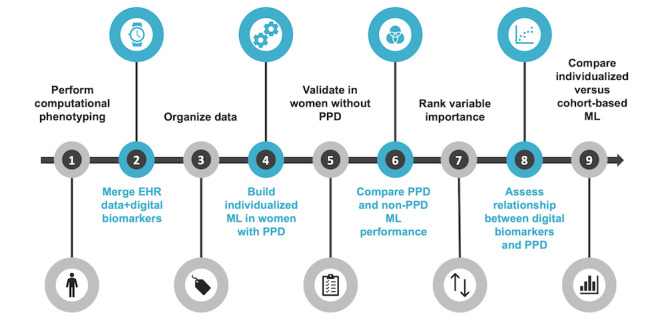Figure 1.

An overview of the analysis workflow to evaluate the potential for digital biomarkers in postpartum depression (PPD) recognition. (1) Develop and perform computational phenotyping of PPD and non-PPD cohorts; (2) merge with available digital biomarker data for each woman (heart rate, steps, physical activity, and calories burned); (3) classify each day as 1 of 4 periods (prepregnancy period, pregnancy, postpartum period without depression, or PPD); (4) build and assess individualized ML models testing random forest, generalized linear models, support vector machine, and k-nearest neighbor algorithms; (5) validate the machine learning (ML) approach in women without PPD; (6) compare individualized model performance in women with and without PPD; (7) determine variable importance for PPD recognition; (8) generate Shapley additive explanations dependence plots to assess the relationship between digital biomarkers and PPD; and (9) compare individualized ML models versus a cohort-based model for PPD detection. EHR: electronic health record.
